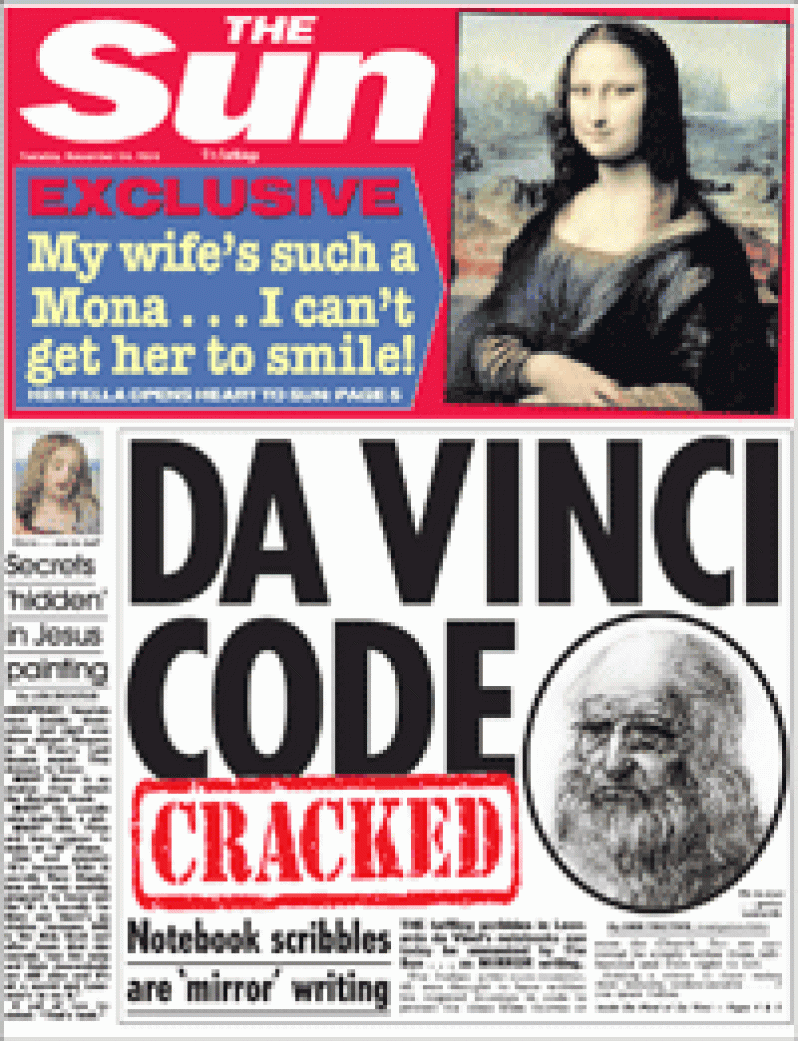da Vinci…
Brilliant artist; even more accomplished scientist
LEONARDO da Vinci was arguably the greatest genius of all time.
A brilliant artist, he was also a disciplined and extremely inquisitive scientist and inventor. Some of his visionary insights were 400 years ahead of their time. Much of what we know about Leonardo’s scientific ideas comes from his notebooks.
He wrote about geometry, engineering, plants and animals, and physics; he made incredible anatomical drawings and designs for a huge number of innovative buildings and machines.
Today, about 6,000 pages survive – less than half the original number. Leonardo (1452–1519) famously penned his notes in mirror writing, but there is perhaps little intrigue in that — he was left-handed, and by jotting from right-to-left, he avoided smudging his ink.
In the 1480s, while employed by the Duke of Milan, Leonardo began studying birds in great detail. He quickly realised they are built very differently from people, and that humans would never fly, simply by using their arms alone to flap big wings.
Around 1490, he drew plans for a flying machine with wings which flapped, using the combined effort of arms and legs. Even this would not have worked, but it was an impressive idea.
During this same period, he also designed a parachute, a glider, a flying boat with wings and a large tail, and a kind of helicopter. In fact, the helicopter was an ‘aerial screw’. It was designed to spin rapidly, pulling itself up into the air as a screw pulls itself into wood.
It is one of Leonardo’s most famous inventions. Others included a primitive tank, a multi-barrelled gun and an extraordinary programmable ‘car’.
In 1501, Leonardo moved to Florence, rented a few rooms in a monastery and set up his studio. Their exact location was a mystery until researchers discovered them in 2005; some of Leonardo’s paintings were still on the walls. It was probably in these rooms, in 1503, that he began one of the world’s most famous paintings: The Mona Lisa.Experts believe the subject of this mysterious portrait was Lisa Gherardini, the daughter of a silk merchant who lived close to the monastery.
Leonardo was born out of wedlock, and was reputed to be a vegetarian homosexual pacifist, very unusual for his time. He lived in an era of phenomenal change, normally called the Renaissance (rebirth), which ran from the 15th until the 17th Century.
No one knows exactly how or when, but the Renaissance seems to have begun because rich people in Florence, Italy, became obsessed by the classical era — the time of Ancient Greek philosophers and scholars, and of the Roman Empire.
The Renaissance blew the cobwebs off the old but inspiring poetry, music, art, mathematics and science. Across much of Europe, new books were being written, with fresh ideas questioning the old assumptions.
Early in the 16th Century, the Renaissance reached England. There, the emphasis was more on literature and philosophy than art and architecture. William Shakespeare (1564–1616) was an English Renaissance man. So, too, was Francis Bacon (1561–1626), often credited with clearly defining the modern scientific method of observation and experimentation.
Once upon a time in history…
SHARE THIS ARTICLE :
Facebook
Twitter
WhatsApp



.jpg)








